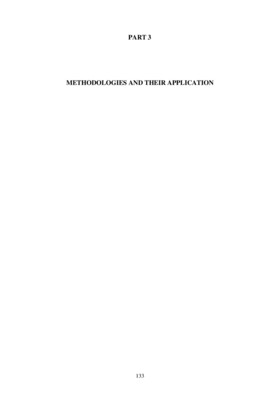PART 3 METHODOLOGIES AND THEIR APPLICATION 133 134 Chapter 7 LAND USE AND NATURAL RESOURCE-BASED INSTRUMENTS
Document begins: PART 3 METHODOLOGIES AND THEIR APPLICATION 133 134 Chapter 7 LAND USE AND NATURAL RESOURCE-BASED INSTRUMENTS 7.1 Land evaluation methodologies Increasing attention is being given to the suitability of different forms of land use. Many of the methods have their origins in land evaluation. Over the past 40 years, a range of methods for physical land evaluation have been developed (and are reviewed by Dalal-Clayton and Dent 2001, and Dalal-Clayton et al. 2002). These try to explain and predict the potential of land for one or more uses by systematic comparison of the requirements of land use with the qualities of the land. The end product is an index of potential performance in terms of capability to support broadly defined categories of use, suitability for some specified land use, or productivity (e.g. crop yield) of a specified land use. In this way, the range of feasible land use options may be identified. Where economic appraisal has been demanded, this has been tacked on without much change in procedure, either from natural resources specialists or economists. The best known and most widely used method of land evaluation is Land Capability Classification, originally developed by the United States Soil Conservation ...
Cite this publication
Available at https://www.iied.org/g02185
